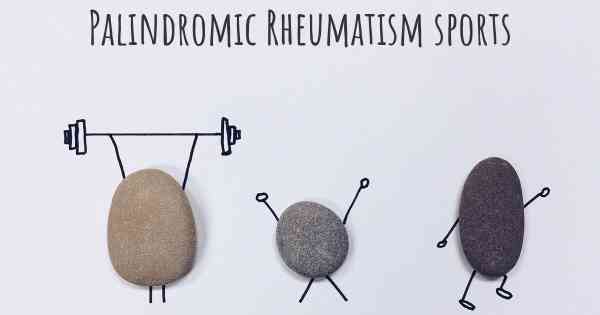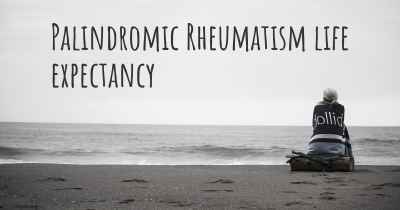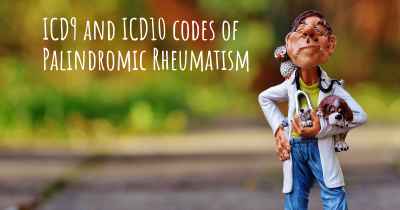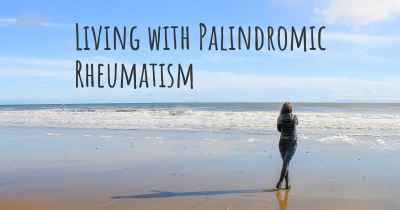Is it advisable to do exercise when affected by Palindromic Rheumatism? Which activities would you suggest and how intense should they be?
See if it is advisable for people with Palindromic Rheumatism to practice sports and which ones are the most recommended if you have Palindromic Rheumatism

Is it advisable to do exercise when affected by Palindromic Rheumatism?
Palindromic Rheumatism (PR) is a rare form of inflammatory arthritis that is characterized by recurrent episodes of joint pain, swelling, and stiffness. While the exact cause of PR is unknown, it is believed to be an autoimmune condition. As with any form of arthritis, exercise can play a crucial role in managing symptoms and improving overall well-being.
Benefits of Exercise for Palindromic Rheumatism
Engaging in regular exercise can provide numerous benefits for individuals with Palindromic Rheumatism:
- Pain relief: Exercise can help reduce joint pain by promoting the release of endorphins, which are natural painkillers produced by the body.
- Improved joint function: Regular physical activity can help improve joint flexibility, range of motion, and overall function.
- Strengthened muscles: Strengthening the muscles around affected joints can provide added support and stability, reducing the risk of injury.
- Weight management: Maintaining a healthy weight is important for individuals with PR, as excess weight can put additional stress on the joints. Exercise can help with weight management and reduce the burden on the joints.
- Enhanced mood and mental well-being: Exercise has been shown to boost mood, reduce stress, and improve overall mental well-being. This can be particularly beneficial for individuals with PR, as living with a chronic condition can sometimes lead to emotional challenges.
Recommended Exercises for Palindromic Rheumatism
When it comes to choosing exercises for individuals with Palindromic Rheumatism, it is important to consider the specific needs and limitations of each person. It is always advisable to consult with a healthcare professional or a physical therapist before starting any new exercise regimen. They can provide personalized recommendations based on individual circumstances.
That being said, here are some exercises that are generally considered safe and beneficial for individuals with PR:
- Low-impact aerobic exercises: Activities such as walking, swimming, cycling, and using an elliptical machine are excellent choices for individuals with PR. These exercises are gentle on the joints while providing cardiovascular benefits.
- Range-of-motion exercises: These exercises aim to improve joint flexibility and reduce stiffness. Examples include gentle stretching, yoga, tai chi, and Pilates.
- Strength training: Strengthening the muscles around affected joints can help provide stability and support. It is important to start with light weights or resistance bands and gradually increase intensity under the guidance of a professional.
- Water exercises: Exercising in water can be particularly beneficial for individuals with PR due to the buoyancy and resistance provided by water. Water aerobics, swimming, and hydrotherapy can help improve joint mobility and reduce pain.
Exercise Intensity
The intensity of exercise for individuals with Palindromic Rheumatism should be tailored to their individual abilities and limitations. It is generally recommended to start with low-impact exercises and gradually increase intensity as tolerated. The goal is to engage in regular physical activity without exacerbating joint symptoms or causing excessive fatigue.
Listening to the body is crucial. If pain or discomfort occurs during or after exercise, it is important to modify the activity or seek guidance from a healthcare professional. They can provide specific recommendations based on the individual's condition and help determine the appropriate exercise intensity.
Conclusion
Exercise can be highly beneficial for individuals with Palindromic Rheumatism. It can help manage pain, improve joint function, strengthen muscles, aid in weight management, and enhance overall well-being. However, it is important to consult with a healthcare professional before starting any new exercise program and to listen to the body's signals during exercise. By incorporating regular exercise into a comprehensive treatment plan, individuals with PR can take an active role in managing their condition and improving their quality of life.
Posted Sep 6, 2017 by Sarah 1150
Posted Dec 1, 2019 by MaddOryxite 3570








